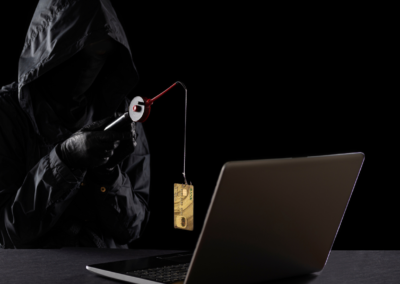In our increasingly connected world, cybersecurity is not just a buzzword; it’s a necessity. Understanding vulnerabilities within your system is paramount. And that’s where vulnerability assessments come into play. This article provides an exhaustive guide on “how to conduct vulnerability assessment” in your digital ecosystem.
Vulnerability Assessment
Vulnerability assessment is an essential aspect of cybersecurity that focuses on identifying, quantifying, and prioritizing potential vulnerabilities in a system. This practice ensures that the system’s defenses are up-to-date and robust against potential threats.

How to Conduct a Vulnerability Assessment?
Vulnerability assessment isn’t just a task; rather, it’s a transformative journey. So, let’s delve into how to embark on this crucial and rewarding expedition.
Define the Scope
Initially, it all starts with a plan. Firstly, what assets do you want to assess? This could range from a single application to your entire organizational network. Similarly, like mapping out a treasure hunt, defining the scope then helps concentrate efforts and resources where they’re needed most.
Data Collection
Undoubtedly, data is the compass for our treasure hunt. Firstly, gather information on network configurations. Next, consider software versions, and finally, take note of access controls. It’s crucial to understand that the more data you collect, the clearer the picture you’ll have.
Vulnerability Detection
Now, without further ado, let’s delve into the heart of the assessment!
Automated Tools: There’s an arsenal of tools available to help identify vulnerabilities. These tools scan, probe, and alert when they find something amiss. However, remember that no tool is infallible.
Manual Detection: This is the point where human intuition truly comes into play. Seasoned security experts can manually test systems, thus frequently uncovering what automated tools might otherwise overlook. Furthermore, have you ever heard of thinking outside the box? Well, this is it!
Analysis of Findings

Vulnerability analysis delves deeper into identified vulnerabilities, understanding them, and devising strategies against potential exploitation. Once vulnerabilities are detected, it’s time to decode what they mean. Which ones pose the most significant risk? This phase involves a lot of number-crunching and head-scratching but is crucial to understanding the gravity of the situation.
Reporting Findings
In the realm of cybersecurity, a detailed report highlighting the vulnerabilities, their severity, and potential impact should be prepared for stakeholders. With that in mind, let’s delve into how to make a vulnerability assessment report that truly stands out.
Introduction: “First, let’s contextualize the report. Why was the assessment conducted?
Methodology: Detail out the methods, tools, and techniques used.
Findings: A comprehensive list of vulnerabilities identified.
Risk Assessment: Categorize vulnerabilities according to risk levels.
Recommendations: Suggest mitigation strategies.
Conclusion: Summarize the findings and next steps.
Remediation Strategy
Identifying vulnerabilities is only half the battle; however, the other half involves fixing them! To accomplish this, first, devise a strategy, then, prioritize patches, and roll them out systematically. Think of it as repairing the faulty locks in your mansion, ensuring comprehensive security.
Types of Vulnerability Assessment
Different digital landscapes require different assessment methods. Some common types include:
Network-Based Assessments: This assessment primarily centers on identifying both external and internal risks associated with network devices such as servers, firewalls, and other network hosts
Host-Based Assessments: Targets vulnerabilities in servers, workstations, and other network hosts. This can also look at nuances like configurations.
Wireless Network Assessments: Evaluate threats in wireless networks.
Application Scans: Focused primarily on software applications, the objective is to identify software bugs and configuration mistakes.
Vulnerability Assessment Checklist – Why It’s Vital
Think of this checklist as your travel pack for a digital expedition. Furthermore, it guarantees that no detail goes unnoticed. Additionally, it often includes:
- Pre-assessment preparations.
- Detailed list of assets.
- Necessary tools and software.
- Potential vulnerabilities to check for.
- Post-assessment action items.
Essential Vulnerability Assessment Tools
There’s a plethora of tools available for vulnerability assessment. Here’s a brief look:
Vulnerability Scanners: Programs designed to probe systems for known vulnerabilities.
Network Scanning Tools: Helps in identifying active devices within a network. Often includes features like port scanning.
Vulnerability Assessment Checklist: A comprehensive list used to ensure that all potential vulnerabilities are considered during the assessment.
Fortinet Vulnerability Assessment: A renowned solution offering detailed inspection of potential threats.
Ensuring the utilization of the right vulnerability assessment methods and tools is not only imperative but also fundamental to effective vulnerability assessment.
Automated Scanning Tools: Software applications that scan systems, looking for known vulnerabilities. Examples include Nessus, Nextdoorsec, etc.

Manual Testing: An expert personally examines systems, employing various strategies and tools. This might catch what automated systems might miss.
Hybrid Testing: A combination of both automated tools and manual testing.
Conclusion
Learning how to conduct vulnerability assessments is a continuous journey towards safeguarding your digital assets. Armed with the right tools, methodologies, and a vigilant eye, you can fortify your systems against potential threats. It’s important to remember that in this digital age, staying proactive is the best defense!
For those seeking expert guidance and a comprehensive vulnerability assessment, consider turning to Nextdoorsec, a leading cybersecurity firm. With their specialized knowledge and cutting-edge tools, they ensure that your systems are robust, resilient, and primed to withstand emerging threats.
FAQs
1. What are the methods of vulnerability assessment?
Vulnerability assessments can be conducted through various methods, including automated scanning, manual testing, and penetration testing, among others.
2. What are the 3 components of vulnerability assessment?
The three main components of vulnerability assessment are the identification of vulnerabilities, quantification (or evaluation) of their impact, and prioritization of remediation efforts.
3. What are the 5 steps of vulnerability management?
The five steps of vulnerability management are:
- Discovery (identify assets).
- Assessment (identify vulnerabilities).
- Prioritization (based on risk).
- Remediation (patch or mitigate).
- Verification (confirm vulnerabilities are addressed).
4. Which tool is used for vulnerability assessment?
There are many tools used for vulnerability assessment. Popular ones include Nessus, Qualys, and OpenVAS. The choice depends on specific requirements and the environment to be assessed.
5. How is vulnerability assessment done?
Vulnerability assessment is conducted by systematically identifying, quantifying, and prioritizing the vulnerabilities in a system using specialized tools and methodologies. This process often involves scanning, evaluating, and analyzing a system’s security posture.
6. How often should you conduct a vulnerability assessment?
Regularly, with most organizations opting for annual or bi-annual checks. However, after major system updates, an assessment is recommended.
7. How to do a vulnerability risk assessment?
A vulnerability risk assessment involves identifying potential vulnerabilities in a system, evaluating the potential impact and likelihood of each vulnerability being exploited, and then prioritizing them based on risk levels. This aids in decision-making for appropriate remediation strategies.
8. Is vulnerability analysis the same as vulnerability assessment?
No, the analysis goes deeper into understanding identified vulnerabilities.
9. How many steps are in vulnerability assessment?
Vulnerability assessment typically consists of five main steps:
- Definition and planning.
- Conducting the assessment using tools and manual techniques.
- Analysis of the findings.
- Reporting the results.
- Remediation and re-assessment to ensure vulnerabilities are effectively addressed.






0 Comments